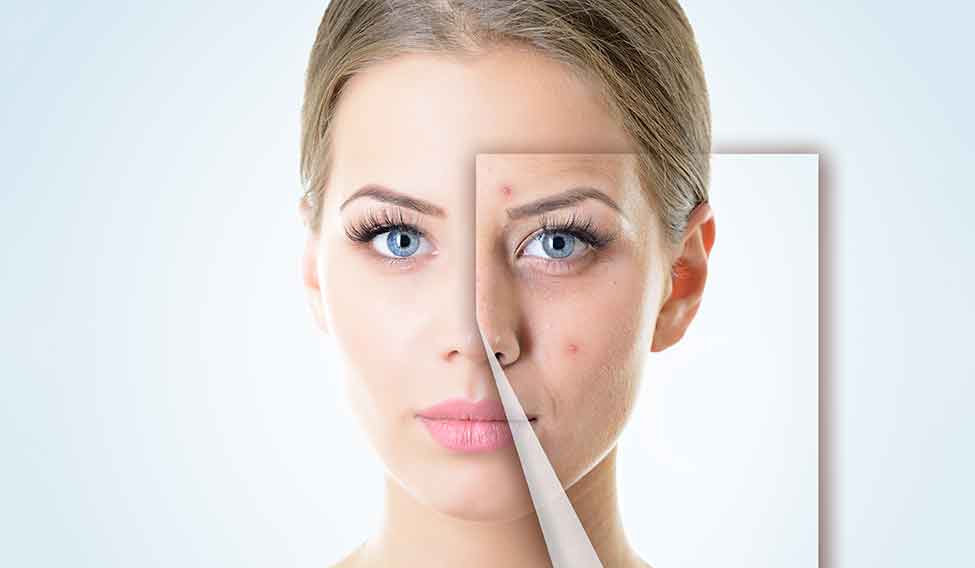Combining two or more treatment options is the best method to manage acne, according to new guidelines issued by the American Academy of Dermatology and published in the Journal of the American Academy of Dermatology.
Acne is a common skin condition that affects millions of people worldwide. Treatments for acne include topical therapy, antibiotics, isotretinoin and oral contraceptives.
“There are a variety of effective treatments available for acne, and dermatologists have found that combining two or more treatments is the best option for the majority of patients,” said the co-chair of the group that developed the guidelines.
When antibiotics are used to treat moderate to severe acne, topical medications should be used at the same time. Patients should continue with topical treatments even after they complete a course of antibiotics.
Topical medications such as retinoids and benzoyl peroxide can be used together for a more effective treatment regimen.
Oral contraceptives may benefit female patients, which can be used in combination with other treatments.
For severe acne that does not respond to other medications, oral isotretinoin can be used. But since it carries a high risk of birth defects, women who take isotretinoin should take all steps to prevent pregnancy.
Some studies have suggested a link between oral isotretinoin and inflammatory bowel disease or depression. But the evidence is not conclusive.
According to the guidelines, there isn’t enough evidence to recommend laser treatments and chemical peels, alternative therapies like tea tree oil or dietary restrictions.
“Acne is a highly visible condition that can have a major impact on patients’ quality of life. Teens and adults who are struggling with acne should visit a board-certified dermatologist, who can help them find a safe and effective treatment option that works for them,” said Dr Mark Lebwohl, president of the American Academy of Dermatology.
Black box warning
The US Food and Drug Administration has asked Bayer, the company that makes the birth control implant Essure, to add a black box warning to the packaging, amid concerns of serious complications.
The FDA has also asked the company to conduct a new clinical trial to assess the safety of the device.
Essure is a permanent form of birth control for women. Flexible coils are inserted through the vagina and cervix into the fallopian tubes. Scar tissue forms around the device and creates a barrier that prevents the sperm from reaching the eggs, thus avoiding conception.
Since its approval in 2002, FDA has received numerous complaints about serious complications, including persistent pain, tearing of the uterus or fallopian tubes if the device moves, abnormal bleeding and allergic reactions.
“The actions we are taking today will encourage important conversations between women and their doctors to help patients make more informed decisions about whether or not Essure is right for them. They also reflect our recognition that more rigorous research is needed to better understand if certain women are at heightened risk of complications,” FDA said in its news release.
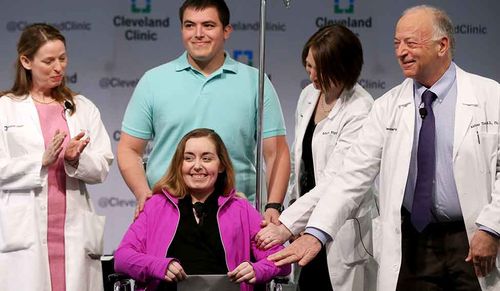
Womb in place
Surgeons in Cleveland Clinic have successfully performed the first uterus transplant in the US, offering hope for women who cannot have babies because they were born without a uterus or had to have it removed or have uterine abnormalities. The condition, called uterine factor infertility (UFI), affects 3 to 5 per cent of women worldwide.
The transplanted uterus came from a deceased organ donor. The recipient, a 26-year-old patient, is in a stable condition following the nine-hour procedure.
Nine successful uterus transplants have been performed in Sweden, with uterus from live donors, resulting in five pregnancies and four healthy babies.
Cleveland Clinic is hoping to perform 10 such transplants and is still screening for suitable candidates who must be aged 21-39 years and have UFI.
Before the transplant, the patient’s ovaries are stimulated to produce multiple eggs. Her eggs are then removed, fertilised with her husband's sperm and frozen for future use. Ten embryos will be frozen.
The patient has to wait a year after transplant for her uterus to fully heal before trying to get pregnant. The embryos will be transferred into her uterus one at a time via in vitro fertilisation.
If successful, the baby is delivered by C-section.
But uterus transplants are temporary. It will be removed once the patient has had one or two babies, so she can stop taking anti-rejection drugs.
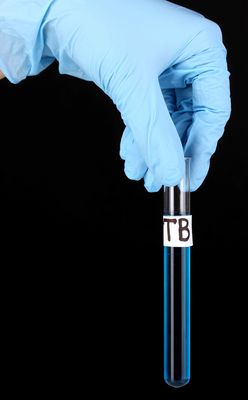
More effective TB test
Researchers at Stanford University have developed a simple blood test that can diagnose tuberculosis more effectively and improve diagnosis and treatment for the 9.6 million people who are newly infected with TB and the 1.5 million who die from the disease each year globally.
“One-third of the world’s population is currently infected with TB. Even if only 10 per cent of them get active TB, that’s still 3 per cent of the world’s population—240 million people,” said Purvesh Khatri, PhD, senior author of the study.
Current diagnostic methods cannot distinguish patients with active TB from those who are no longer sick or have been vaccinated against the disease. The older tests can also miss TB in patients with HIV.
Analysing sputum coughed up by patients is a common diagnostic method for TB, but it can be difficult for people to produce sputum on demand and as patients start to get better, they often can't produce sputum for the test.
The new blood test eliminates the need to collect sputum; can diagnose TB in HIV patients; won’t yield a positive result for someone with latent TB or has had a TB vaccine. The test can be used in both adults and children.
According to a university news release, the researchers at Khatri lab have identified three human genes whose expression changes in a consistent pattern, revealing the presence of an active TB infection.
The Khatri test accurately distinguished active TB in 1,400 human samples. It could also monitor patient’s response to treatment.
The test can be done under relatively basic field conditions in rural and undeveloped areas of the world.
The findings are published in The Lancet Respiratory Medicine journal.
Did You Know
Women with asthma who undergo fertility treatments take longer to get pregnant and have lower success rates, especially when they are above 35 years of age.
European Respiratory Journal

Happy heart breaks, too
Not just sadness, but happiness, too, can break your heart!
Takotsubo syndrome (TTS), commonly known as "broken heart syndrome", is typically triggered by events that cause severe emotional distress, such as grief, anger or fear, such as the death of a loved one.
TTS causes a sudden temporary weakening of the heart muscles that causes the left ventricle of the heart to balloon out at the bottom and not pump as well. It can cause chest pain and breathlessness and can lead to heart attacks and even death.
A Swiss study in the European Heart Journal suggests that TTS can be triggered by happy events, too. They are calling it "happy heart syndrome".
The researchers analysed data from 1,750 patients diagnosed with TTS worldwide and identified 485 cases where there was a definite emotional trigger; 465 (96 per cent) of the cases were provoked by sad or stressful events, such as death of a loved one, attending a funeral, an accident, worry about illness, or relationship problems. But 20 (4 per cent) had TTS that was triggered by happy or joyful events, such as a birthday party, wedding, birth of a grandchild, surprise farewell celebration, or a favourite sports team winning.
TTS commonly affects older women: 95 per cent of the patients in both the "broken hearts" and "happy hearts" groups were women.
The study authors suggest "that happy and sad life events may share similar emotional pathways that can ultimately cause [Takotsubo syndrome]."
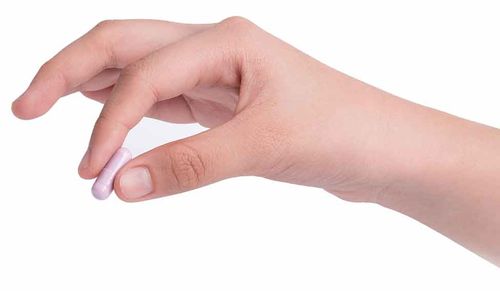
Less high for her
The first ever female libido drug that was approved by the US Food and Drug Administration last year may boost sexual satisfaction only marginally, but may cause a host of serious side effects.
For the study, published in the journal JAMA Internal Medicine, the researchers reviewed eight clinical trials, five published and three unpublished studies, involving 5,914 women.
Treatment with flibanserin only added one-half additional satisfying sexual event per month. But the side effects were many.
Flibanserin quadrupled the risk of dizziness and sleepiness, more than doubled the chance of nausea and increased the risk of fatigue by more than half.
“The findings of this review suggest that the benefits of flibanserin treatment are marginal, particularly when taking into account the concurrent occurrence of AEs [adverse events],” the study concluded.

Is your job hurting you?
Your job can have an impact on your heart health. The study presented at the American Heart Association meeting looked at the heart health of 5,566 men and women aged 45 or older based on a set of modifiable risk factors called Life's Simple 7.
The seven risk factors that can increase the risk of stroke and heart disease include blood sugar, blood pressure, cholesterol, physical activity, smoking, diet and body mass index.
"The lower the number of ideal cardiovascular risk factors, the easier it becomes to predict their future health ills, including premature death, heart disease, stroke and kidney disease," said the study’s lead researcher.
People working in sales, office or food service jobs appear to have more risk factors that harm heart health. Sales and office job employees are more likely to eat an unhealthy diet, smoke, be sedentary and have high blood pressure and high cholesterol levels. Food service employees had the worst eating habits.
Police, firefighters, truckers and health care support workers were more likely to be obese and have high blood pressure and high cholesterol levels. Truckers and other materials transportation workers had the highest smoking rates.
Overall, managers and professionals had the lowest risk factors and better cardiovascular health. However, 72 per cent of white-collar finance and business professionals had poor eating habits.
According to the study author, simple steps like eating a fruit instead of pastry or chips, taking lunch time walks, parking farther away from destinations and taking stairs instead of the elevator can add up to improved health.
“You can't change what you are not aware of, so an important first step is taking a cardiovascular risk factor inventory. It is then helpful to evaluate whether the social and environmental conditions of work may be contributing in ways that enhance or reduce health maintenance activities—this includes getting routine medical evaluations, getting enough quality sleep, opportunities for walking and exercising, access to nutrient-dense meals and snacks, maintain a healthy weight, not smoking, and avoiding second-hand smoke," the lead researcher suggested.
Did You Know
A jury in St Louis in the US has awarded $72 million to the family of Jacqueline Fox, who died from ovarian cancer, which she claimed was caused by the talc in Johnson & Johnson's Baby Powder and Shower to Shower which she had been using for several decades for feminine hygiene.
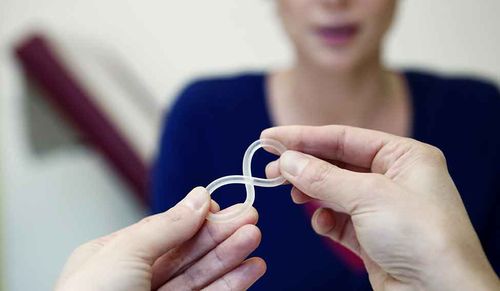
Ring that protects
A vaginal ring containing the antiretroviral drug dapivirine can help prevent HIV infection in women.
The insertable, silicon ring contains a month's supply of dapivirine, which it releases directly and continuously to the site of infection. It is easy to use; a woman can insert it herself and be discreet about it. She doesn’t have to tell her partner and it does not interfere with sex.
It is the first long-acting HIV prevention method designed for women, who bear the greatest burden of global HIV/AIDS epidemic. In sub-Saharan Africa, women aged 15 to 24 are twice as likely as men to be infected with HIV.
In two separate trials, the ring reduced the risk of HIV by 31 per cent and 27 per cent. The ring was more effective in women over the age of 21 who used it more consistently; the risk of HIV was reduced by 56 per cent and 37 per cent, respectively.
The trials were conducted across different sites in Africa.
The vaginal ring is developed by the nonprofit group International Partnership for Microbicides (IPM).
“These findings give new hope to many women at high risk who need more and different options to effectively protect themselves from HIV,” said the founding chief executive officer of IPM.
Beget after Big C
Men who survived cancer as children and young adults are less likely to have children.
For the study in the British Journal of Cancer, researchers analysed data from all Norwegian men born between 1965 and 1985. Paternity was especially low among male cancer survivors of testicular cancer, brain tumours, lymphoma, leukaemia and bone cancer.
Men diagnosed with cancer before age 25 were less likely to get married than men without a cancer diagnosis. They were more likely to have fertility problems and were three times more likely to use assisted fertilisation to have children than those who never had cancer. This finding can help develop treatment protocols that have minimal impact on fertility. Preserving sperm before starting treatment is a viable option.
The study also found that children of cancer survivors are not at an increased risk of perinatal death, congenital anomalies, preterm birth or low birth weight.
Thanks to advancements in cancer therapy, the number of childhood cancer survivors is steadily going up. Nearly 80 per cent of those diagnosed with cancer during childhood or adolescence will survive their cancer.
"It is important to be able to assure young, male cancer survivors that their illness and treatment will not have a negative impact on their own children," said the study author.
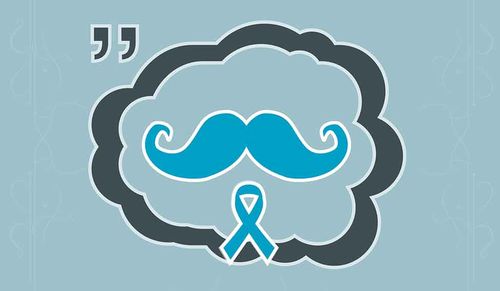
Vitamin D guards
Prostate cancer tends to be more aggressive in men who have vitamin D deficiency, according to a study published in the Journal of Clinical Oncology.
The study was based on 190 men, with an average age of 64, who underwent radical prostatectomy to remove their prostate. Vitamin D levels were measured a couple of months before the tumour was visually identified as aggressive during surgery.
Eighty-seven men had aggressive prostate cancer. Those with aggressive cancer had vitamin D levels about 16 per cent lower than men with slower-growing tumours.
The finding is especially important for men with slow-growing tumours who opt for active surveillance, in which the cancer is closely monitored with regular tests and aggressive and unnecessary treatments that have a lot of side effects are avoided. The cancer is treated only if it becomes high-risk.
“Vitamin D deficiency may predict aggressive prostate cancer as a biomarker. Men with dark skin, low vitamin D intake or low sun exposure should be tested for vitamin D deficiency when they are diagnosed with an elevated PSA or prostate cancer. Then a deficiency should be corrected with supplements,” the lead investigator noted.
Did You Know
Motor vehicle accidents, gun violence and drug overdoses, which contribute to more than 1,00,000 deaths per year in the US, play a big role in why Americans' life expectancy is about two years shorter than that of residents of other developed countries.
Journal of the American Medical Association

Crash course
Did you know your emotions can put you at an increased risk of a car crash? According to a US study published in the Proceedings of the National Academy of Sciences, the risk for a crash increases nearly tenfold if you drive while you are angry, sad, crying or emotionally agitated.
For the naturalistic driving study, researchers installed advanced suite of cameras, sensors and radars to monitor the driving habits of more than 3,500 drivers, aged 16 to 98, over three years, which provided them with real-time information about driver performance and behaviour.
There were more than 1,600 verified crash events ranging from mild events such as tire and curb strikes to more severe crashes. The current study focused on 905 higher severity accidents involving injury or property damage.
Driver-related factors like fatigue, error, impairment and distraction were evident in nearly 90 per cent of the crashes.
The risk for a crash is more than double when drivers engage in distracting activities that take their eyes off the road, such as using a handheld cell phone, reading or writing, or using touchscreen menus on the dashboard. The biggest risk factor for a crash was alcohol and drugs, driving under its influence increased the risk of an accident by about 36 times.
"These findings are important because we see a younger population of drivers, particularly teens, who are more prone to engaging in distracting activities while driving. Our analysis shows that, if we take no steps in the near future to limit the number of distracting activities in a vehicle, those who represent the next generation of drivers will only continue to be at greater risk of a crash," the lead author noted.
Did You Know
Heavy drinking—six to nine drinks—in one night nearly doubled the risk of cardiovascular events like heart attacks and strokes over the following week, while 19 to 30 drinks a week increased the risk as much as six times.
Circulation
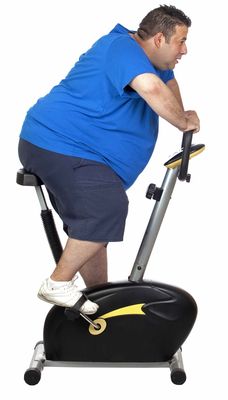
Exercise and diet
Do you think the needle on your weighing scale is not budging even though you are slogging in the gym?
A study in the journal Current Biology suggests that exercise has its limits when it comes to losing weight. Exercising more does not necessarily equal to burning more calories. Our bodies adapt to higher activity levels and energy expenditure plateaus after a certain point.
The researchers analysed the daily activity levels and energy expenditure of 332 adults, aged 25 to 45 for a week. People with moderate activity levels—walking a couple of miles per day—burned about 200 calories more than people who were sedentary.
But people who indulged in more intense physical activity did not burn more calories. They burned the same amount of calories as people who were only moderately active.
“The predominant view is that the more active you are, the more calories you burn every day. It's really not a simple dose-response relationship. The body adapts to exercise, and it begins adapting at a moderate level of activity,” the lead researcher said.
But that does not mean that you don’t have to exercise. Exercise has immense health benefits. But for weight loss, diet changes have to be combined with exercise to see results, the study suggests.
Contributor: SHYLA JOVITHA ABRAHAM



